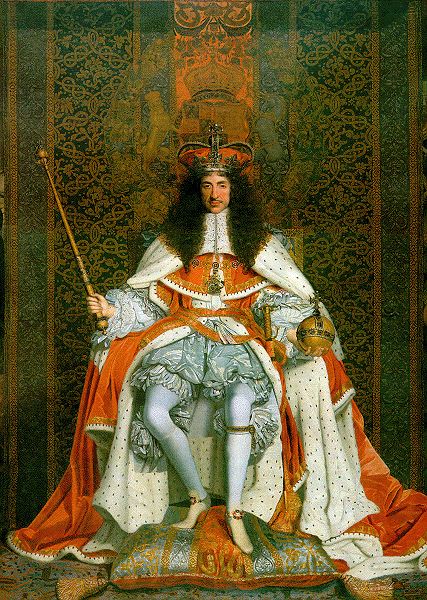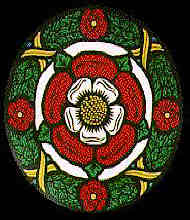| 
DON WE NOW OUR GAY APPAREL 
If the Twelve Days of Christmas set the stage for high drama, rest assured that the players were appropriately costumed. The festivities of the holiday season provided the swells with the opportunity to over-awe their competition with their opulent finery - pity the poorer noble who had to scrape and pinch in order to maintain a suitably glamorous image. Of course, none would dare to outshine the king and queen (dressing to put your guests at ease was unheard of in this circle). This was one of the three times annually (the others being Easter and Whitsunday) when the monarch would don the official Crown of State, a massive gold headpiece, commissioned by William the Conqueror and modeled after the crown of Charlemagne. Ermine, the regal fur of choice, would lend the sovereign further splendor. For some, such as Henry II, well-known for his lack of interest in the outward trappings of majesty, this would be enough of a fashion statement. Others seized the opportunity for peacock-like posturing. In 1482, a Christmas guest noted that Edward IV - a notorious clothes-horse - strode into court "clad in a great variety of most costly garments, of quite a different cut to those which had usually be seen hitherto in our kingdom." Henry VIII and his daughter Elizabeth consistently rose to the fashion-occasion, as well. Richard II had grave - and justifiable! - misgivings about his cousin, Henry of Bolingbroke. An astrologer had once warned the king that he would be "slain and destroyed by a toad�? If the prediction seemed ludicrous at first, it must have seemed less so when Henry appeared at the king's Christmas feast, merrily attired in a robe embroidered 'round with toads (guess he wasn't a reindeer sort of guy). Ever quick on the up-take, it took Richard no time to make the dire connection. Clothes were not the only area where extravagance ruled. Conspicuous consumption was expected when it came to gift-giving. Christmas gifts were typically exchanged on New Year's Day, or occasionally on Twelfth Night. After a week of suspense ("I wonder what Santa brought this year ?"), the eager recipients were ready for the really good stuff. Of course, the biggest and best gifts were to be given to the royal family. No one seemed at all embarrassed by the possibility that an expensive cache of gold or silver plate, a jewel-studded accouterment, or an exotic beast might be construed as trying to buy one's way into royal favor. On Twelfth Night, 1392, the citizens of London, anxious to bury the hatchet with Richard II, bestowed upon the king and Queen Anne a one-humped camel and a pelican, novelties for the royal menagerie at the Tower of London. Robert Dudley, Earl of Leicester, was one of the most successful gift-givers of the Tudor era, lavishing original and expensive gifts on Elizabeth year after year ( a good thing, since Gloriana would have expected nothing less). On the first Christmas of her reign, she was presented with elegant silk stockings - henceforth she never wore wool stockings again. Dudley also gave Elizabeth what is believed to be the world's first wristwatch . . . appropriately bedecked in glittering jewels. Of course, it is a joy to give, as well as receive - particularly if the recipient understands the hidden message. Medieval and Tudor monarchs bestowed gifts upon their favorites in descending order: the more lavish the gift, the higher the esteem with which you were held - or the bigger the favor the king was about to ask. Gift-giving was a very public occasion, and courtiers jostled for position to see who had given or received the most important presents. Yet, it wasn't just the court that received royal treats at Christmas. Throughout his reign, Richard II made significant contributions to religious institutions at Christmas, including the bestowal of the Holy Innocents relics to York Minster in 1395. Nor were all Christmas gifts presented in a box with a bow - titles and honors were rarer (but exceedingly more welcome) treasures. In 1470, as part of a formal pacification program between sparring Yorkist "supporters", Edward IV elevated John Neville's son, George, to the dukedom of Bedford . . . and threw in a betrothal to the princess Elizabeth of York (the marriage never came to pass), for good measure. 
|
 Free Forum Hosting
Free Forum Hosting